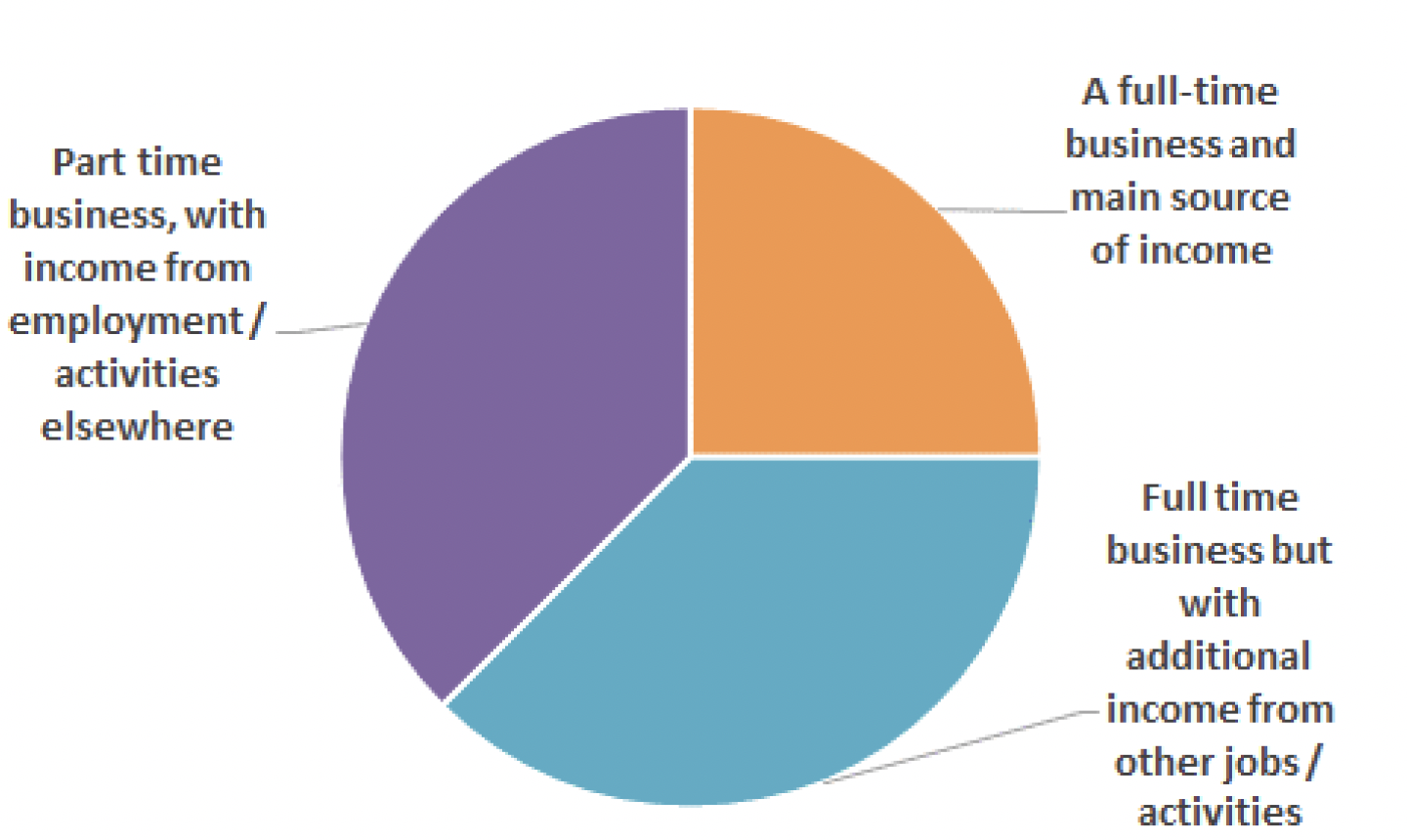Starter farm initiative - tenant insights: review
This report is an evaluation from the perspective of the tenants of the starter farm initiative of 9 starter farms which were made available from 2012 for a period of 10 years.
Introduction to Starter Farm Programme
It is well established that entry to and exit from farming are required to stimulate growth and innovation in agriculture by bringing in 'new-blood', new ideas, and new investment (see for example Cook et al 2009[1] in Scotland; Potter and Lobley, 1996[2] in England; ADAS, 2004[3] for the UK). However, start-up costs and access to land remain a significant barrier to new entrants – specifically to those new entrants with no succession routes into farming. Partly in response to initiatives such as the Tenant Farming Forum[4], the Scottish Government endeavoured to address these new entrant barriers through agricultural tenancy reforms as part of the wider land reform agenda - as well as through new/young famer start-up grants and direct agricultural support uplifts.
High land values are often considered an insurmountable barrier to land ownership for most new entrants to farming meaning there has been considerable policy emphasis on providing access to land through agricultural tenancies. The Land Reform (Scotland) Act 2003[5] Act, and subsequent Acts, introduced new forms of agricultural tenure that endeavoured to reinvigorate the tenancy sector and provide opportunities for those taking their first step on 'the farming ladder'. However the rights to buy for secure (1991 Act) tenants afforded in the Land Reform (Scotland) Act 2003, mean there is a dwindling stock of traditional (secure 1991 Act) tenancies in Scotland.
The Agricultural Holdings Review Group (2104)[6] made a series of recommendations on how to deliver against the Scottish Government's vision for "a Scottish tenant farming sector that is dynamic getting the best from the land and the people farming it, and provides opportunities for new entrants, forming part of a sustainable future for Scottish farming." At the same time as the Review Group was formed 10 starter units on publicly owned land were created to address the lack of opportunities in Scotland for new entrants to farming. Nine of these units were on Scotland's National Forests and Land (SNFL) managed by Forestry and Land Scotland (FLS) and one on the Rural Payments and Inspections Division (RPID) estate. These part-time units were created to provide a unique opportunity for new entrants "to get a start". These starter units ranged from 46-175 hectares and were intended to be part-time units where supplementary off-farm income was required (see Figure 1 for how the tenants report the nature of their business).

Tenancies were established for 10 years with the expectation that the farm tenancies would be recycled every 10 years to provide a further 10 new starter tenants an opportunity to get established on the 'farming ladder'. Due to a Strategic Review of Starter Farms by the landlord these first starter tenants were all given a 3-year extension to their leases.
To secure these tenancies prospective tenants had to go through a tendering process that involved presenting a 5-year business plan and attending an interview. 77 applications[7] for 10 starter farms demonstrates the level of demand for these units with the first lease awarded in October 2012 and the final lease awarded in October 2015[8] (see Table 1). This means that all the tenants are, at least, in the 8th year of their tenancy providing a useful timeframe for reflection of their starter farmer journey.
| Farm | Hectares | Farm Type | Applications | Entry |
|---|---|---|---|---|
| Pitcairn | 95.61 | Grassland | 7 | Oct 2012 |
| South Dundonald | 51.19 | Arable (ex open cast) | 5 | Oct 2012 |
| Carserigg | 175 | Grassland (ex open cast) & RGR | 4 | Mar 2013 |
| Falgunzeon | 48.55 | Grassland & RGR | 8 | Apr 2013 |
| Upper Tullochbeg | 45.73 | Grassland | 8 | Apr 2013 |
| Glenside | 63.92 | Grassland | 9 | Sep 2013 |
| Rhynaclach | 68.1 | Grassland | 18 | Sep 2013 |
| Achnamoine | 100.68 | Grassland & RGR | 5 | Apr 2015 |
| Woodfold | 82.86 | Mixed arable/grass/RGR | 7 | Oct 2015 |
| Balrobert | 120.00 | Mixed/arable/grassland | 6 | Sep 2014 |
| Average | 84 Ha | Total applications | 77 |
The original stated objectives of the starter farms were to:
- Attract and develop new talent through providing an opportunity to farm and a base from which to build a business
- Demonstrate the integration of farming and forestry in Scotland
- Recycle the units every 10 years to provide further opportunities for new entrants
To date there has been no assessment of the outcomes of the initiative. This short evaluation, funded through the RESAS 2022-2027 Strategic Research Programme underpinning national capacity for support for policy, aims to provide some insights on the perceptions of the tenants from their starter farm experience to date.
Contact
Email: ceu@gov.scot
There is a problem
Thanks for your feedback